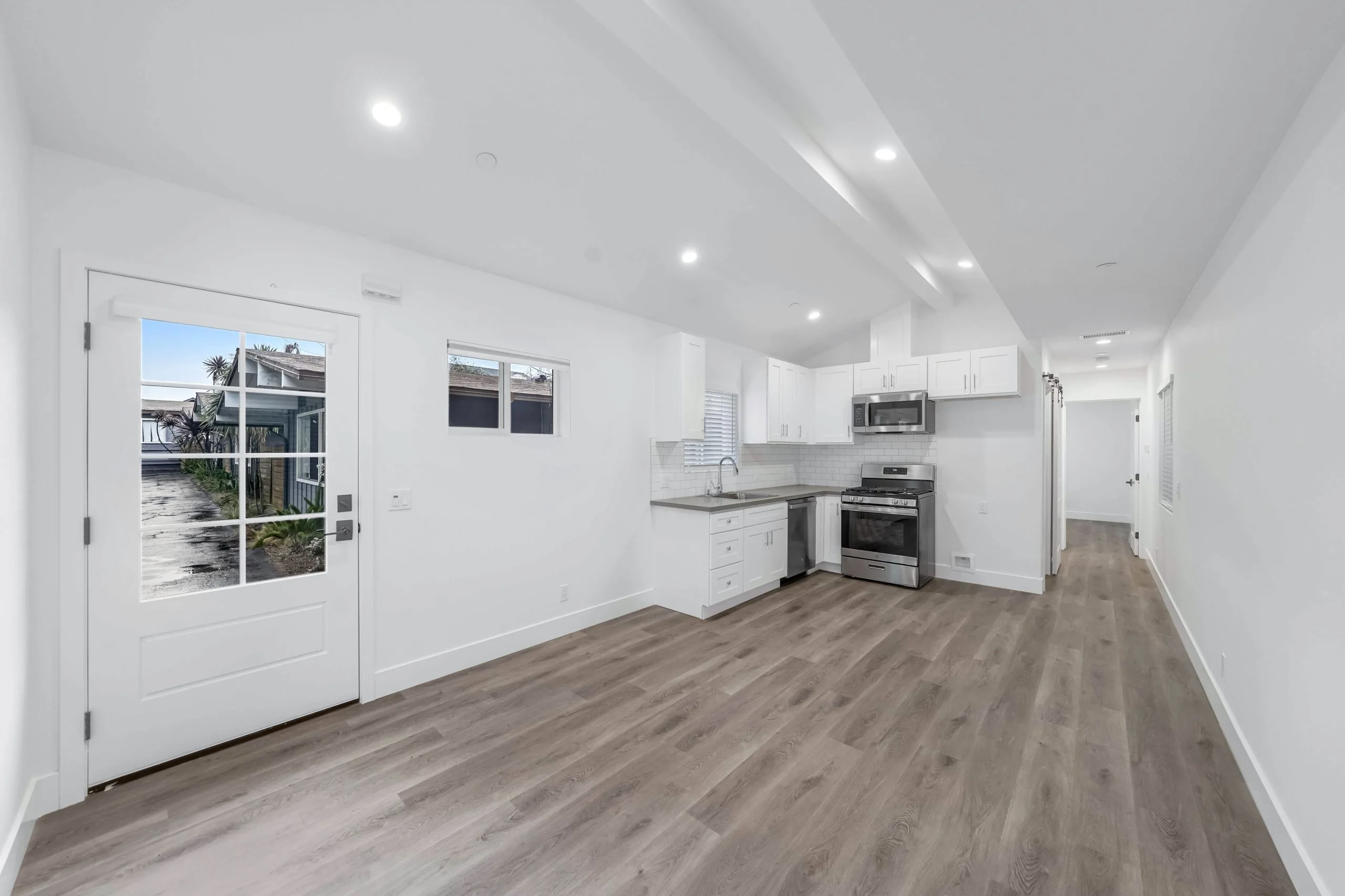
You might have observed the growing trend of ADU in California. Maybe one of your neighbors just converted their garage into a house, or one of your friends created a new house for an extended family. The ADU development was raised after new ADU laws in California came into existence. ADUs, commonly referred to as Granny Flats or In-Law Units, have become popular for various reasons. It adds value to the property as it is budget-friendly and a source of income.
As of 2023, the State of California has passed new (Accessory Dwelling Units)ADU laws. It has removed a lot of restrictions, making it easier and more affordable to build ADUs.
In this blog, we will highlight and discuss the new ADU laws, what are the updates, and how it is beneficial to property managers and residents.
60-Day Rule: Shorter Time for ADU Permit Approval
The updated rule of Assembly Bill 2221 requires the agencies involved in reviewing ADU plans to respond within 60 days of plan submission. It includes the planning department and utility companies also. With this update, the time required for application review and processing will decrease.
The policy of ‘act on’ is changed to ‘approve or deny.’ It means the agency has to either say yes or no; it cannot be on hold for long.
Revised ADU Height Restrictions
According to AB 2221, the height restrictions are updated as follows:
-
16 ft
This height of ADUs is allowed for construction under any circumstances.
-
18 ft
This height is allowed for the detached ADUs if the proposed property is within ½ mile of any major transit stop or if it is located on a property with a multistory multifamily dwelling(2 stories high or more).
-
25 ft
An attached ADU can be built up to 25 ft high, or it can be the same as the height of the main house, depending on whichever is lower.
Redefined Setbacks
Earlier, the setbacks were decreased to four-foot side and rear yards. But now, the agencies cannot deny your proposal for a front setback if a proposed ADU is less than 800 sq. ft, as there is no other space left during the construction of the property.

Senate Bill 897
Before SB 897, if there were any unpermitted zones, the homeowners were required to bring them to the current codes. Due to this California’s ADU development was slow and costly.
With the 2023 update, SB 897 has removed the restrictions for non-confirming zoning conditions, building code violations, or any unpermitted structures. These conditions are removed from the unpermitted structure only if it is safe and healthy.
Also, according to this bill, the fire sprinklers are no longer required for the main house during the ADU proposal.
Smaller or No Impact Fees
Local agencies impose a fee, referred to as impact fees, for providing public services such as electricity, water, sewer, etc., to new projects under development. After the new ADU laws, any ADU up to 750 sq. ft is exempted from paying this impact fee. For larger units, the fee is calculated according to the footage of ADU as well as the primary unit.
Owner Occupancy is not Mandatory
If you want to build an ADU but do not want to stay in the primary house of the ADU, it is now allowed. These units can help landlords and investors to use their properties for investment, providing more housing options.
Senate Bill 9
During the 2022 amendments in ADU laws, Senate Bill 9 gained attention. This bill is more about duplexes and lot splits. This bill has 2 sections:
- Two-Unit Development: It allows California homeowners to build two housing units on their lot, which is meant for only 1.
- Urban Lot Split: It allows the single-family residential lot to be split into 2 separate areas and are treated individually.
Some other key points of SB 9:
- The projects must be used for residential use.
- The properties must be within an urbanized area.
- For a lot split, the lots must meet the minimum size requirements.
- Any lot which is split under SB 9 cannot be adjacent to each other.
Any information related to SB 9 is subjected to exceptions and restrictions that need to be properly understood.
Other Important Changes
- It is not necessary to have a separate bathroom for the attached Junior Accessory Dwelling Unit (ADU) if there is one in the main dwelling unit.
- Once the ADU permit is issued, the demolition permits can no longer be withheld.
- The California ADU Fund is created to assist the eligible recipients.
Implement New ADU Laws in California with BFPM
If you are planning to invest in ADU in California, you must be aware of the latest laws. Our expert property managers have all the updated information on laws, regulations, and their implementation to assist you construct and maintain ADUs. With BFPM’s management strategies, we will ensure that your property is well-developed and you can earn the maximum profit.
BFPM will help you with faster ADU plan reviews for regular as well as Junior ADUs. You can reach us to convert any non-habitable rooms, such as basements, garages, attics, etc.
You can rely on our expertise in property management and stop worrying about your investment returns. Reach us for queries related to new ADU laws or any questions about property management.
Learn more about how we can help. Customized solutions for large portfolios!
